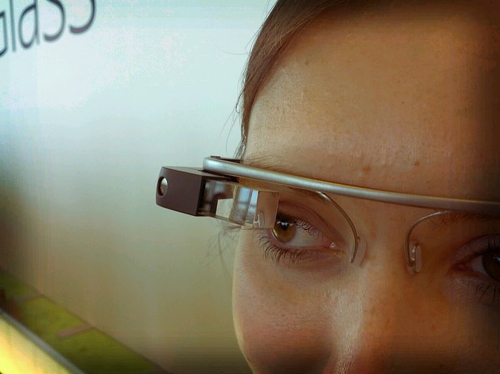Image from Flickr by Antonio Zugaldia
Alright. Google Glass. Here we go.
Google Glass has been hitting the news recently for a few reasons. It’s the next big thing. Or it’s not the next big thing. Everybody will be recording everybody else. We will need to learn new lessons in etiquette. It sucks. Its amazing. It looks stupid. How will I tell if he’s paying attention to our conversation or reading Glass? (I imagine, as is normal, you will be able to tell by his eye movements). Triggering these sorts of discussions is always a good thing, so I’ll throw in a few of my own.
Google is trying to usher in the next age of technology, but also something that has been kicking around for a while and not really taken off: wearable computing. Athletes, and probably triathletes in particular as we tend to be a gadgety-next-big-thing bunch, have been using and relying on wearable technology for ages. I train 20 hours a weekish at the moment with a computer strapped to me. It’s small, I barely notice that it’s there other than when I need to see its display or when it beeps or vibrates alerts at me. It records a huge amount of data and shows it to me in a huge range of ways. It records my heart rate, speed, route, distance, training stress, power output, swim laps, swim stroke, and cadence, and it tells me when I need to change pace or effort to match my planned training routine. It keeps me apprised of the volume of training I’ve done, and shares all of this with various repositories on the internet that are able to do even more crunching with these data.
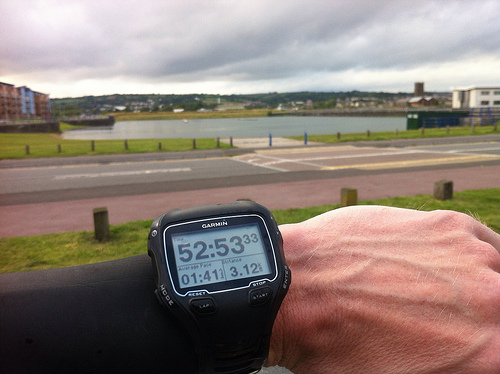
Some days (like during today’s run) I don’t look at it. Today was an easy run done by feel, enjoying the view, and not wanting to be affected by data or distracted. It was lovely. Just what I needed. Next Saturday it will be beeping at me for a large part of my long run as it pushes me to stay within a tempo pace, giving me feedback and helping me develop my feel for race pace without affecting my run style or mechanics. It will tell me when to go easy, and when to go fast. Without this wearable technology my training would not be as effective as it is. So for many people wearable technology is not a new thing.
Continuing the athletic theme, would Google Glass help me here?
Glass was released to a group of “Explorers’ this week; a small group of enthusiastic (and some sceptical) users that travelled to New York and shelled out $1500 for the chance to be the first to try out this new tech. There’s a huge amount of interest in this, and there was a lot of competition or standing in line for this. Glass has a tiny display that shines light onto your retina, forming an almost imaginary screen floating above and to the right of your right eye. That, in itself, is the most important thing about Glass. It also has a camera, a bone-conducting speaker, a microphone, wi-fi, a few other doo-dahs, and it hooks up wirelessly to the Android phone in your pocket right now and potentially other smartphones in the future (more here).
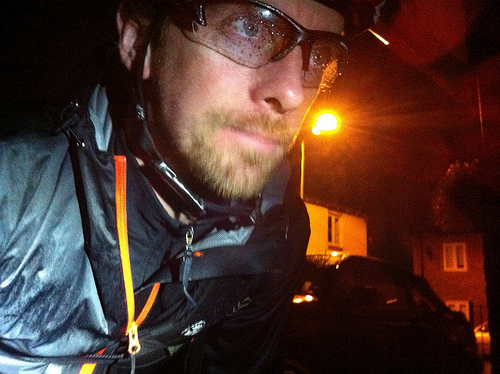
If I go running or cycling with Glass I would be able to see my live data constantly. Do I want this? Or feel I need this? No, neither, not really. Glass would help me follow new routes, keep me in touch with the internet, and allow me to call home. Do I want any of these? The first would be useful, and is also already offered by existing technology. The others? Not really. I carry a phone with me on the bike just in case, but I hate to carry anything bigger than my keys when running. I don’t want to be distracted when training. My brain is already really good at that, unlike other people that don’t seem to be able to go for a 10 minute jog without music and a bottle of water. I only run with glasses when it’s sunny, and I always cycle with glasses.
The other thing Glass does is record video and photos. I might create the odd video of an entire training run with fast reps and live telemetry embedded on screen like the Contour camera does. But again, this is an example where the technology already exists. I’d love to show my kids what it’s like to descend the Black Mountain on a folded ribbon of black tarmac through a white snowscape. If Glass was incorporated into my existing glasses would it be useful? It would be very handy to have with you at all times, wouldn’t it? It doesn’t need to be on, and in your face, but when you need to access something it would be a lot easier than getting your phone out of your pocket. I’m not sure that applies to “real life” as well as to on-the-bike life. I doubt whether Glass would survive a Welsh winter training with me.
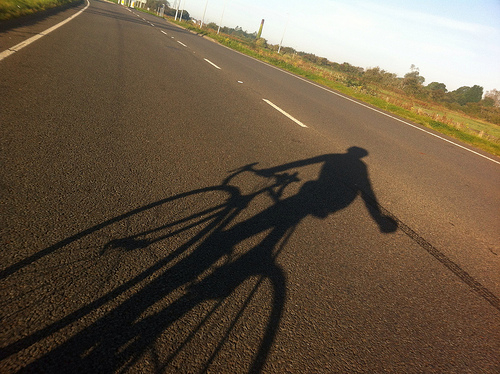
Most of us don’t travel that much. When driving to work we should pay attention to the road, when cycling we pay attention to the road or cycle path and hopefully enjoy what’s around us, and when commuting by train or bus we might as well pull out a phone or tablet. Right now it looks like a smartphone will have a better display anyway. I swim in the afternoons and my walk to the pool and back has become a part of my day when I work through and clear out my email or catch up on twitter. Glass might stop me from walking into other people but I’ve survived so far. For the rest of the day most of us are sat at computers anyway, so where does Glass fit in here?
The success of Glass lies in the combination of a number of existing technologies into a new, single device. That’s familiar. We all went through that with smartphones, led into it by the iPhone, and we’ve never looked back. How many of us carry a camera and a phone separately now? Look how having a camera with us all the time, connected to the internet changed how we share with each other. It wasn’t until the 3GS that the iPhone was good enough for me to buy and it’s likely that Glass may also need a few iterations to take hold. I already have some ideas for anatomy applications for Glass that I can’t do as well with existing technology, and I’ll write about some of that another day. I’m keen to get funding for the first consumer release to test some ideas and see how non-computer science students view Glass.
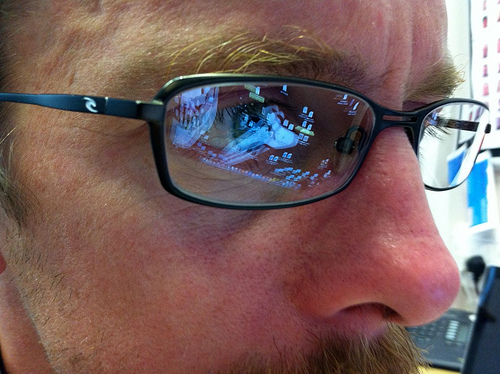
I’m not convinced that Glass in its current form is the future. That in itself, given my history of tech prediction success, suggests that Glass will be a massive success, selling tens of millions of units within the next few years. The challenge for Google will be in making this available at an appropriate price point (seems achievable as the component cost is low) without making us all look like dicks when wearing it. They’re going to need more than posters of pretty people wearing Glass to achieve that one.
